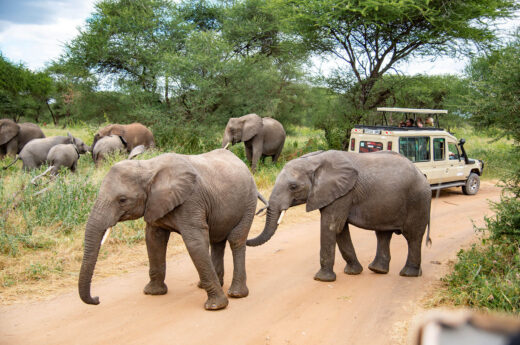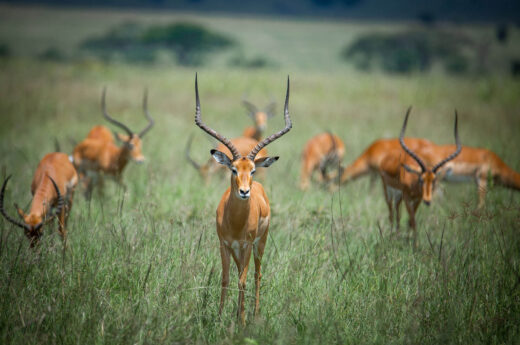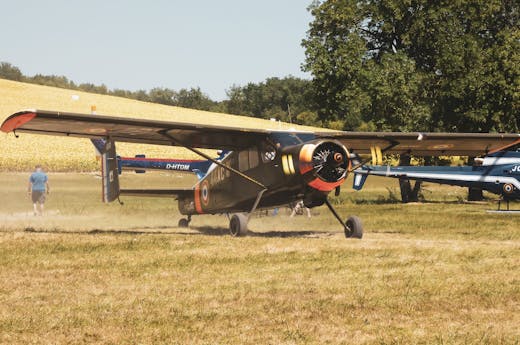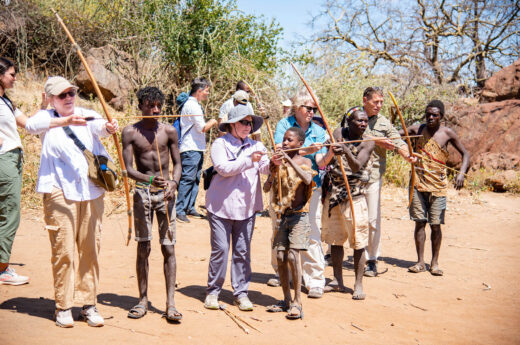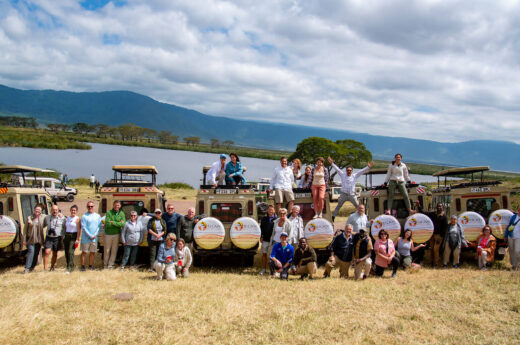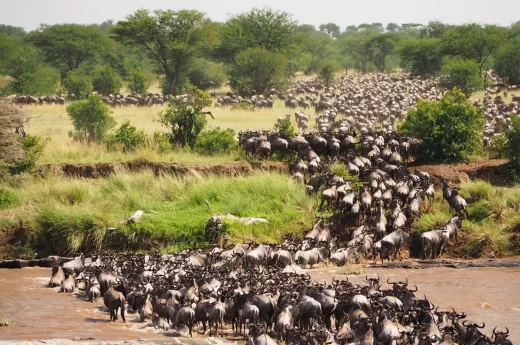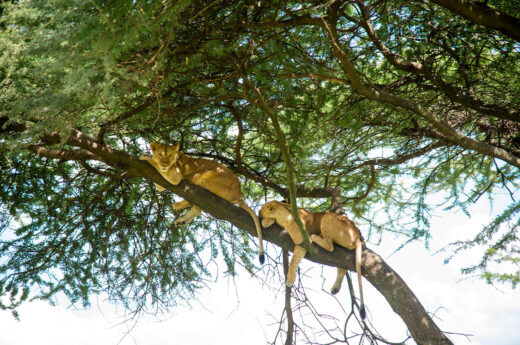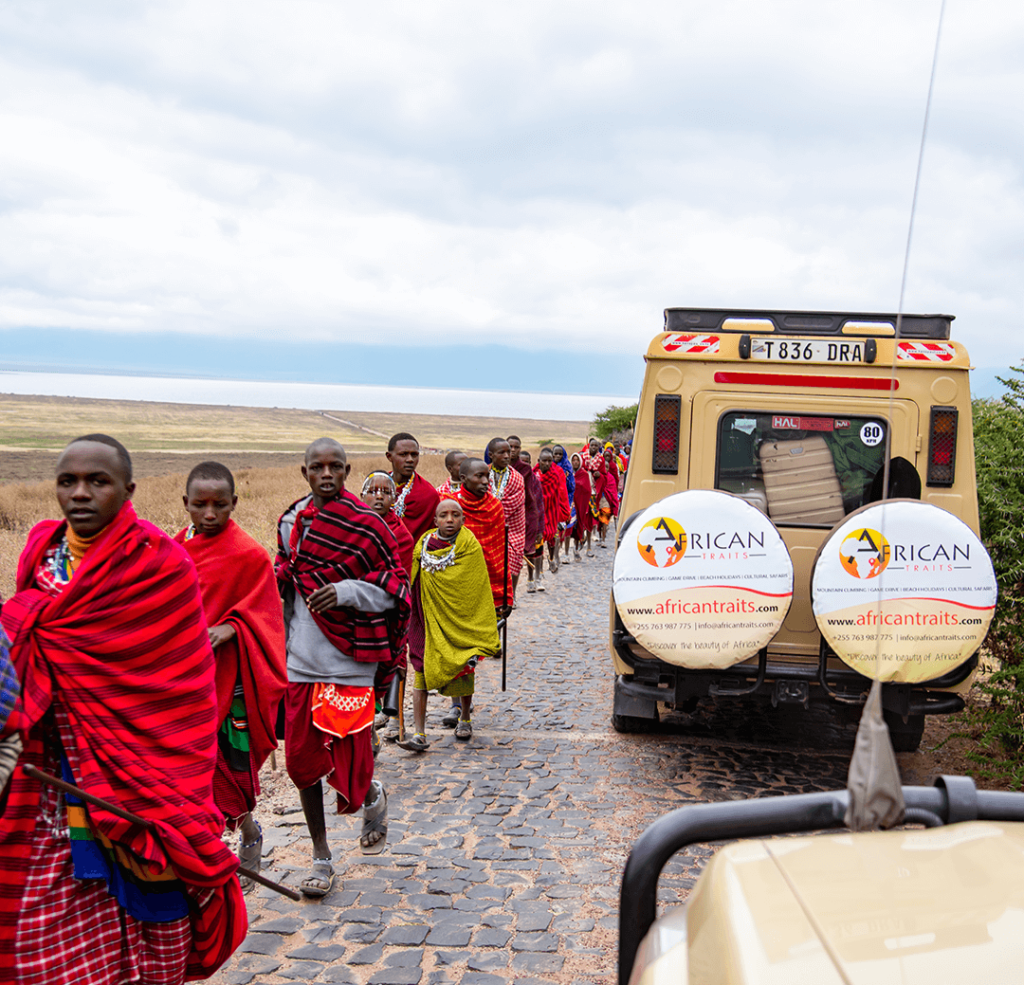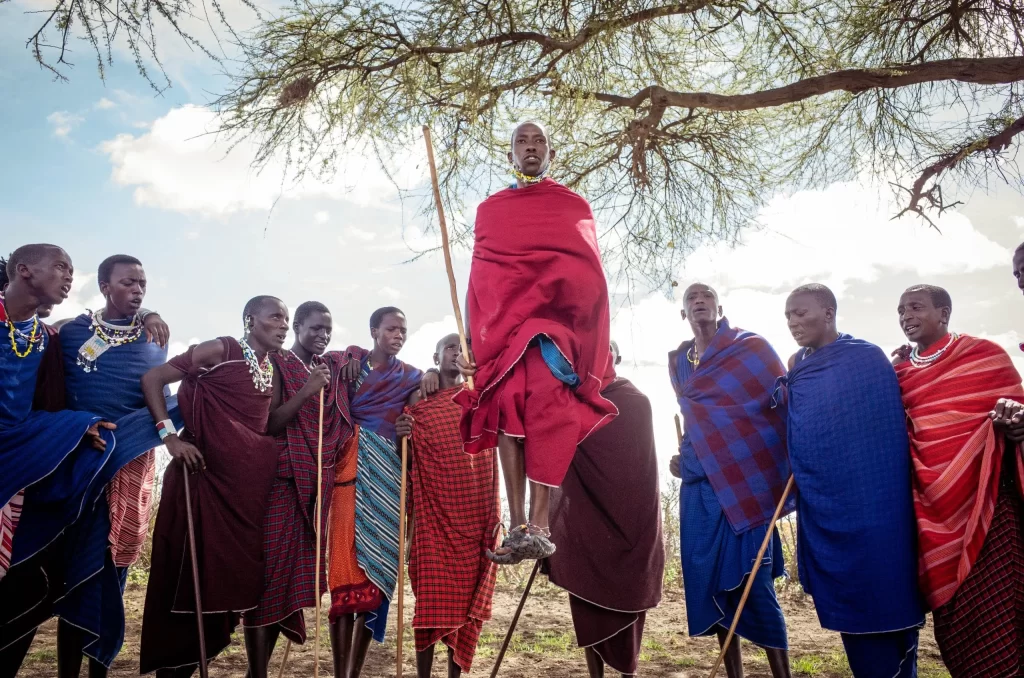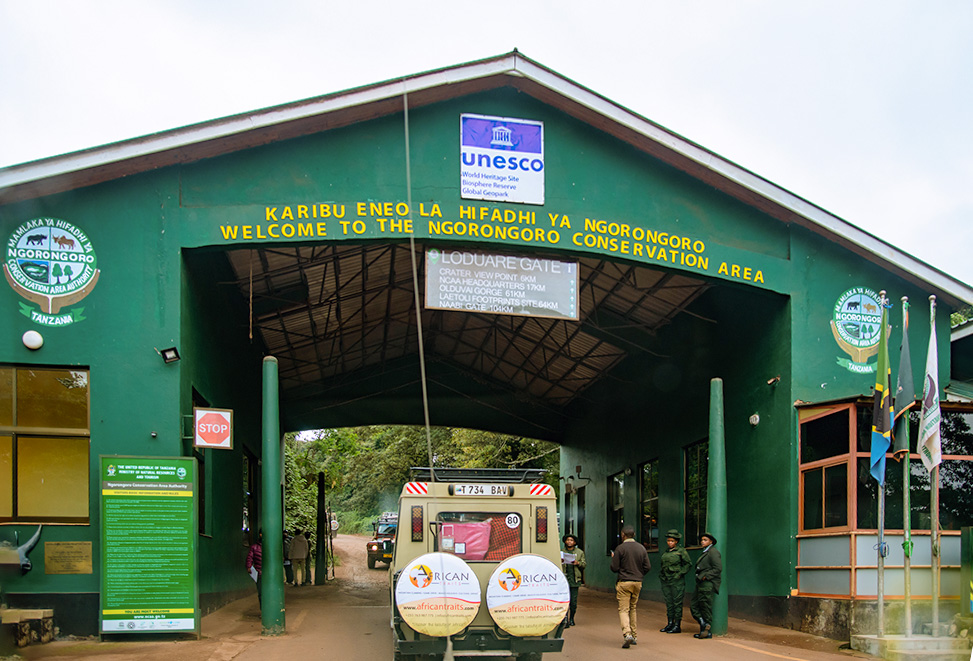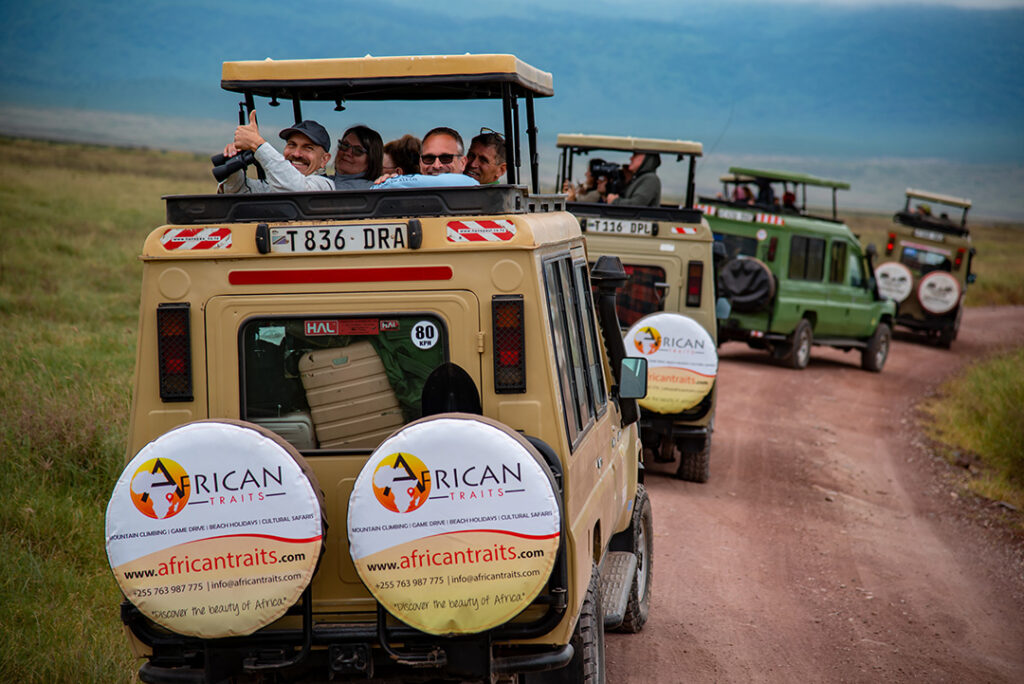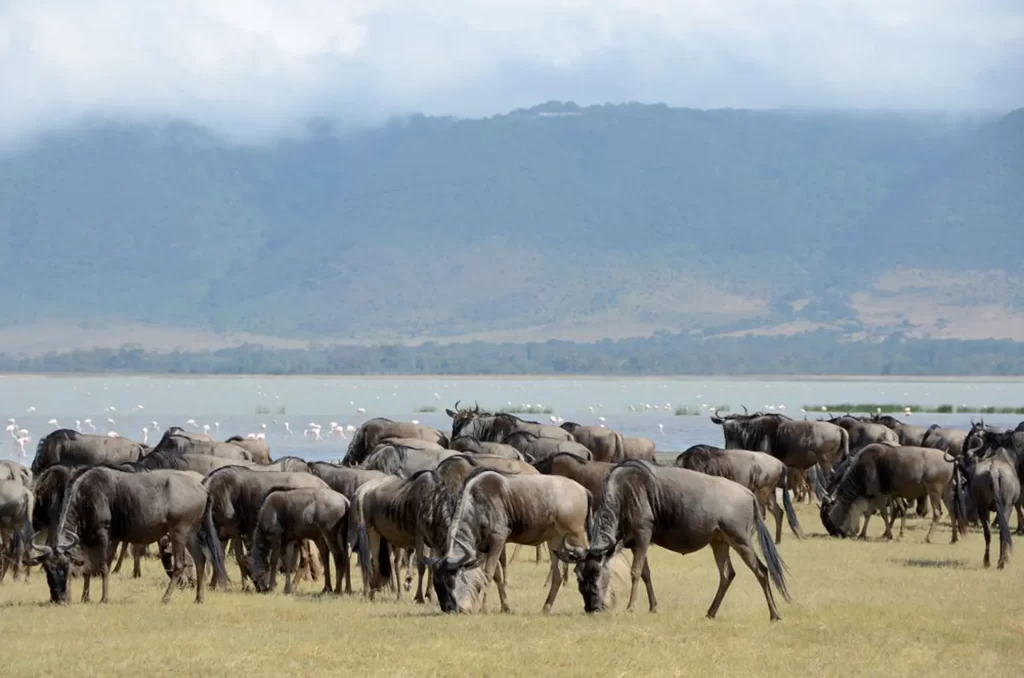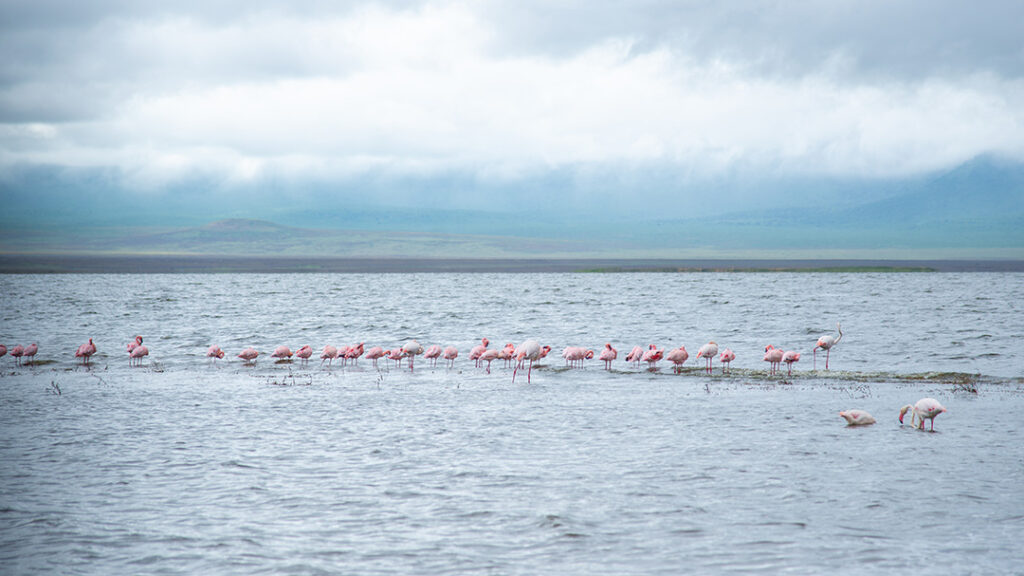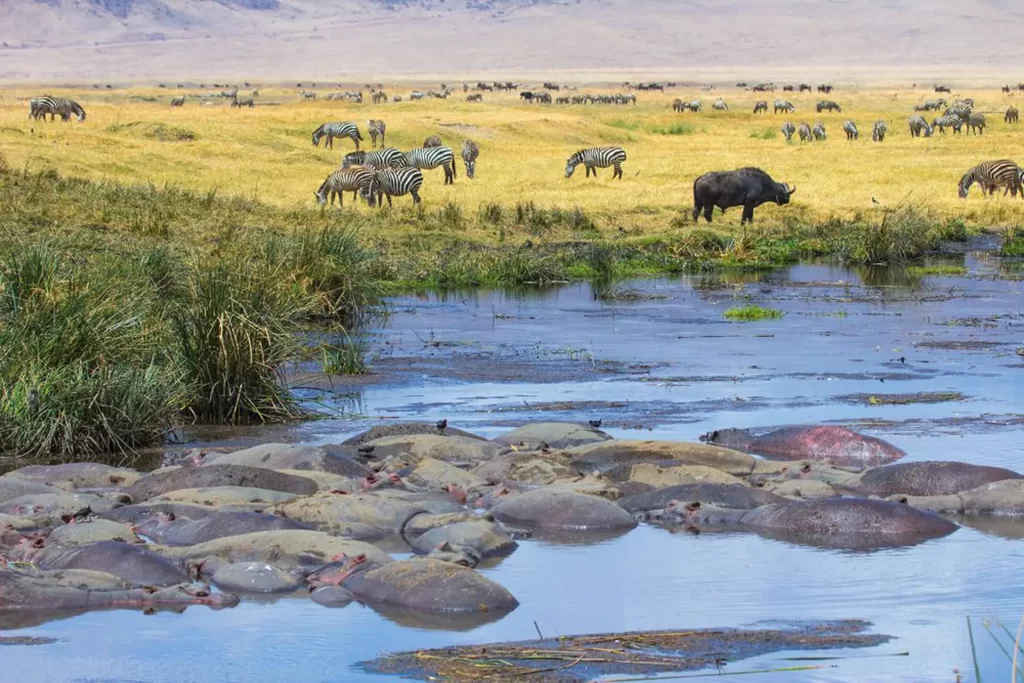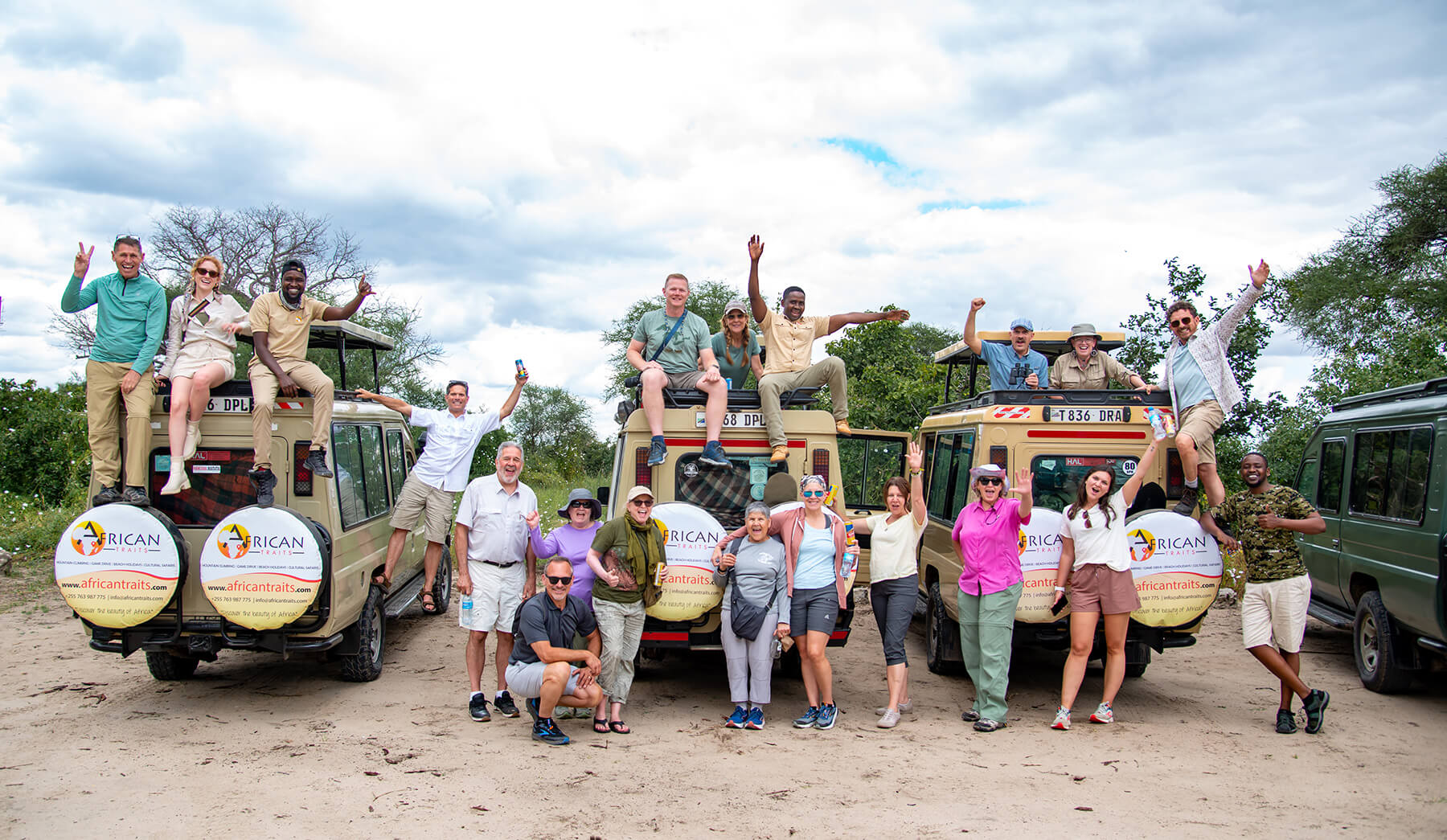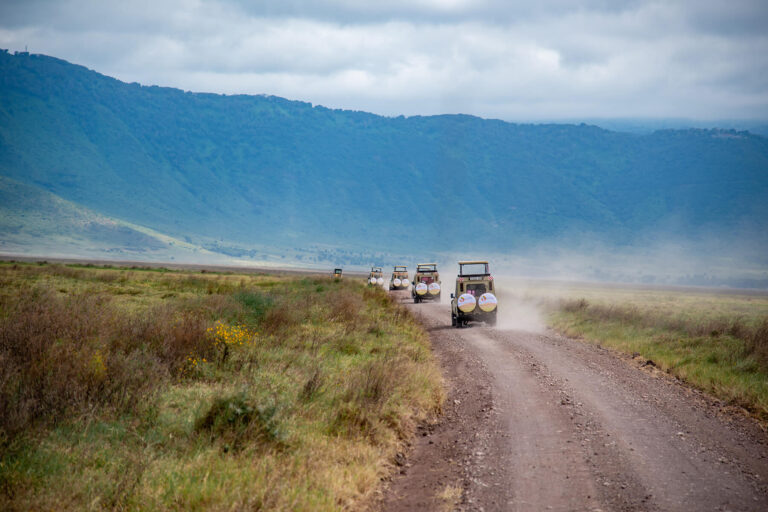
Ngorongoro Crater
A volcano that is estimated to have been marginally taller than Mount Kilimanjaro erupted two million years ago with such force that the volcano's mouth imploded. The Ngorongoro Crater, the world's largest intact caldera, remained after the dust settled.
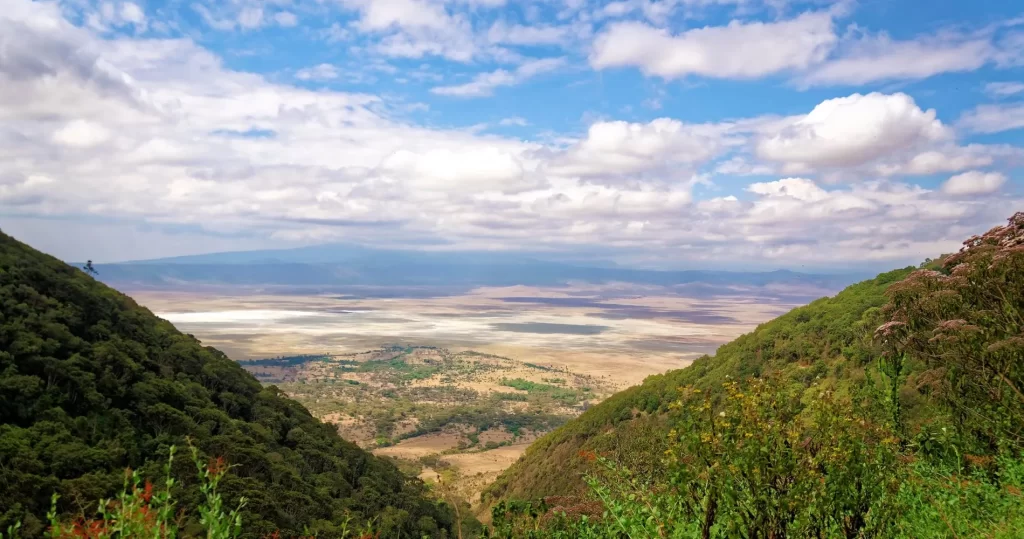
Overview
The crater spans 260 km² (100 mi²), with its rim 610 metres (2000 ft) high. An eruption enriched the area with mineral-rich dust, fostering fertile soils. Underground rivers feed springs, bringing nutrients to the surface.
This environment supports permanent water sources, attracting animals. Their presence enriches the soil further, creating a productive grassland. Over time, swamps and forests emerged, hosting the planet’s densest concentration of large mammals.
Maasai tribe
During your safari it is also possible to visit the Maasai tribe. They are allowed to let their livestock graze in this area. If you really want to learn more about the lifestyle and rituals of this fascinating tribe, we recommend you to book a Maasai Tour.
Activities
Game Drives
With half and full-day options available, visitors accompany an experienced guide to search the crater floor for the Big 5 and other wildlife species.
Hot Air Balloon Trips
This tranquil experience offers a unique perspective of the landscape surrounding the crater.
Archaeological Excursions
Visit nearby archaeological sites to learn more about the evolution of humankind.
Cultural Visit
Gain an insight into the area’s indigenous cultures, with visits to local homesteads.
Picnic
Arrange a catered picnic at a designated site on the crater floor.
Bird Watching
Over 500 species await discovery by the avid birder visiting these parts.
The Ngorongoro Crater is a prime wildlife viewing destination year-round, unaffected by the Great Migration, thanks to its ample food and water. Home to an estimated 25,000 large mammals, its flat terrain and sparse vegetation make spotting animals, especially after rains, easier. The crater boasts one of the highest densities of lions in Africa, though it faces challenges like inbreeding.
Spotted hyenas are common, while cheetahs, leopards, and African wild dogs are rarer, with leopards mostly in the Lerai Forest. Mega-herbivores such as hippos, buffalos, elephants, and black rhinos are prevalent, except giraffes. It also hosts wildebeest, zebra, warthogs, antelopes, and a rich variety of birds, making it a hub of East African wildlife diversity accessible throughout the year.
Within the Ngorongoro Conservation Area
Seasonal Overview
April / May – ‘Shoulder Season’ – Tourist numbers remain high year-round, with a slight decrease during this period.
June – September – ‘Dry Season’ – Rain is minimal, and the short grass enhances wildlife visibility, making it easier to spot animals.
November – May– ‘Wet Season’ – Lush, green grass during this time boosts the scenic beauty of the landscape.

